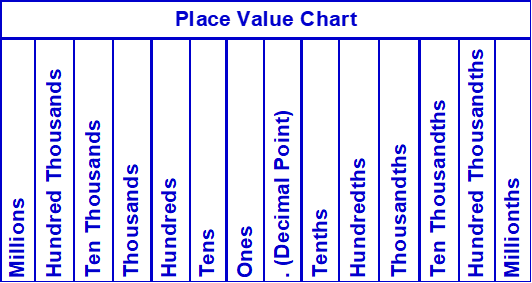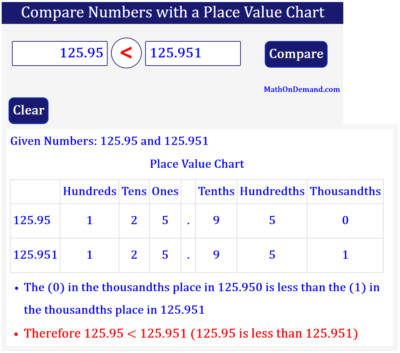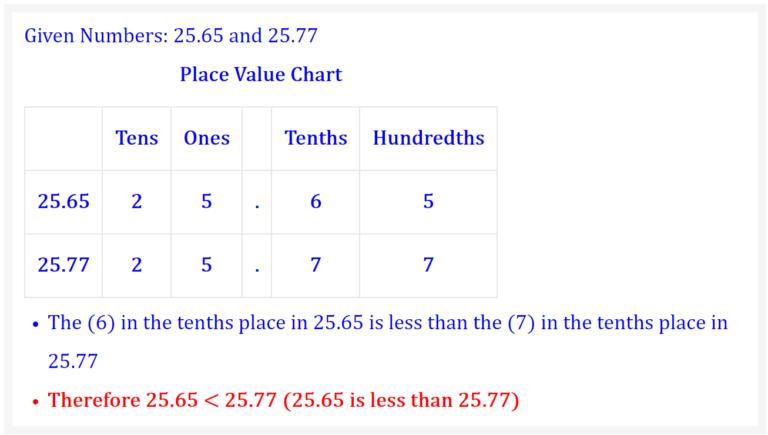As illustrated below and by other available solutions, this application will Compare Numbers with the aid of a place value chart.
Students in the 5th grade should be able to compare decimal numbers up to the hundredths place under Common Core standards. Because the digits need to be aligned by the places they occupy in the decimal number, the best way to learn how to compare decimal numbers is to put the digits in a place value chart. In other words, an understanding of place value is essential to learning how to compare decimal numbers.

After the digits of each number are placed in the place value chart according to the places they occupy in the decimal numbers, they should be compared by place from left to right. That is to say they should be compared from greatest place value to smallest place value. If the digit in one decimal number is larger than the digit in the other decimal number relative to the same place they occupy in the place value chart, then the decimal number with the largest of the two digits is the largest of the two decimal numbers.
For example, the 3 in the Tenths place in 12.34 is larger than the 2 in the Tenths place in 12.24. Therefore 12.34 is greater than (>) 12.24. Alternatively, 12.24 is less than (<) 12.34. From a practical standpoint, $12.34 is more than $12.24.
If there is no difference in the value of all the digits in both numbers, then the two decimal numbers are equal. Notably, 0s at the end of a decimal number do not change the value of the number. For example, 2.5 is equal (=) to 2.50. As a result, the addition of placeholder 0s at the end of a decimal number help clarify the comparison. Relatedly, the decimal number with the most digits to the right of the decimal point is not always the larger number.
With the intent of illustrating the step-by-step process discussed above, the application returns a place value chart that puts each digit in the decimal numbers entered into the chart according to the places they occupy in the numbers as illustrated by the example below. If appropriate, it will add placeholder 0s. And it returns a list that reflects the comparison from left to right of the first set of digits in the same place that are not equal to each other. Based on that comparison, a conclusion is reached as to the inequality between the two decimal numbers. If all the digits in both numbers are equal, the application returns a conclusion that the decimal numbers entered are equal.


